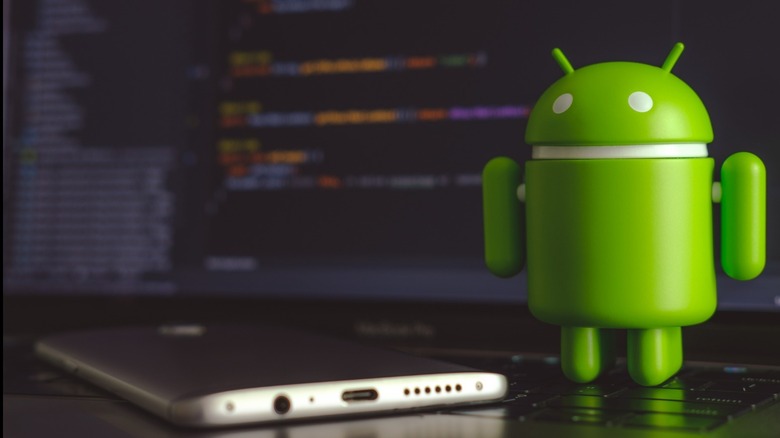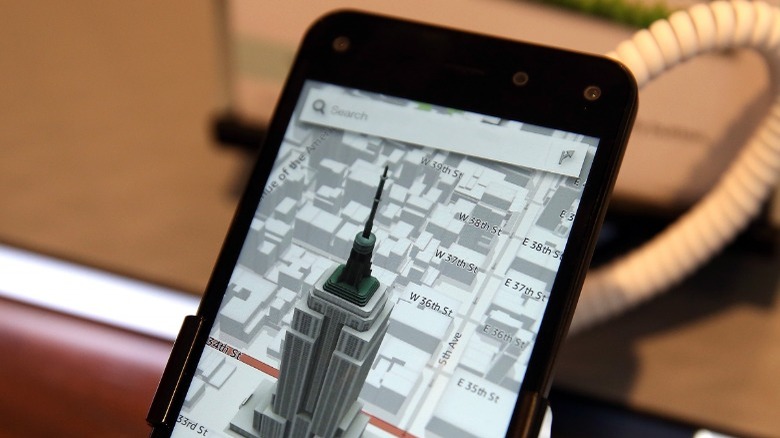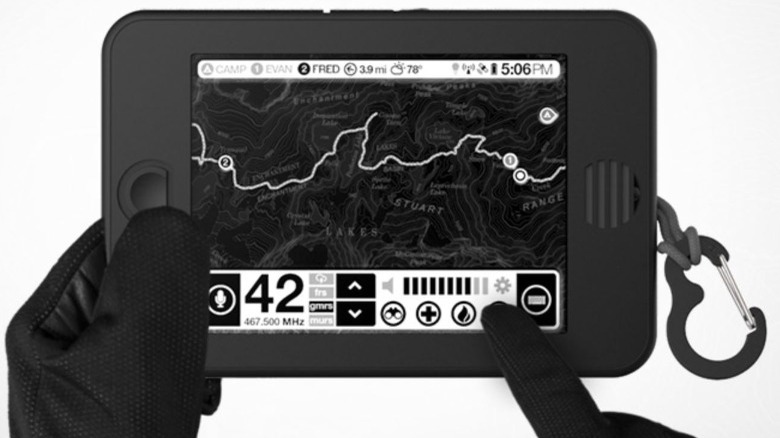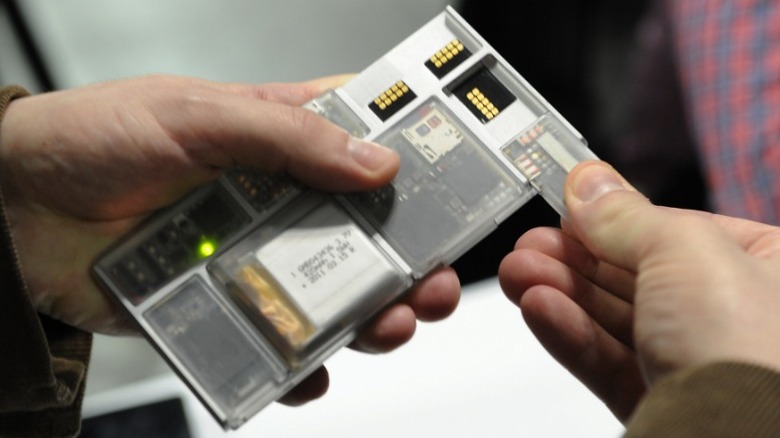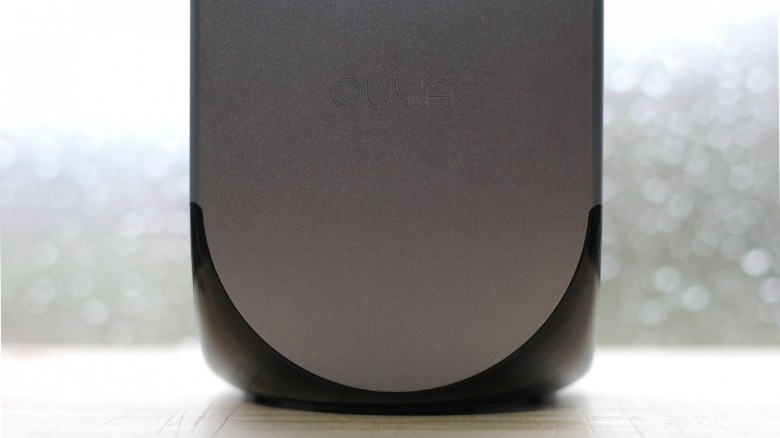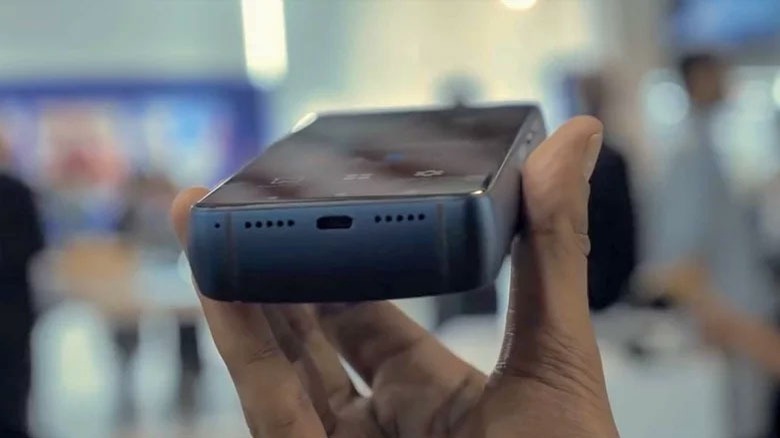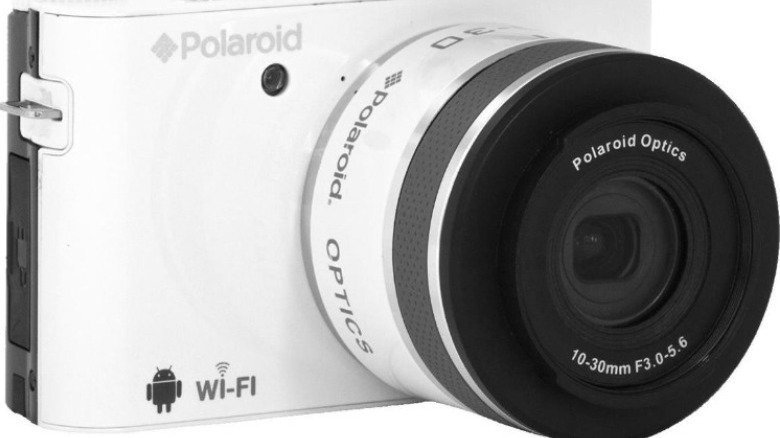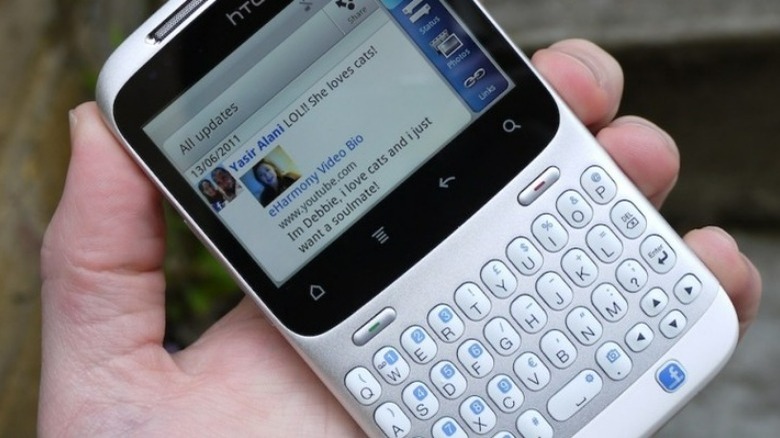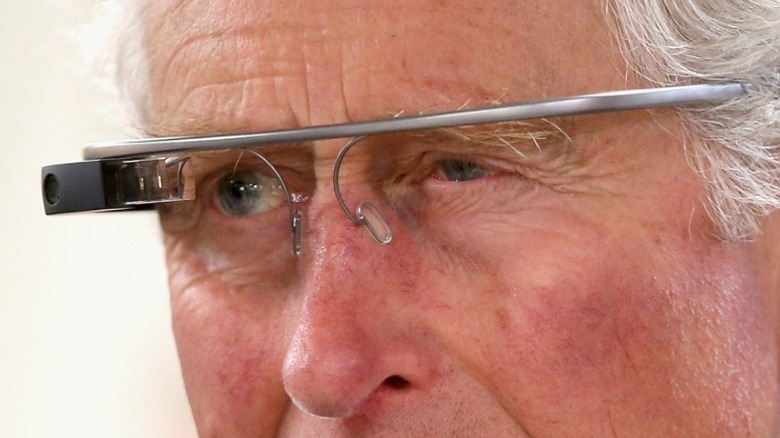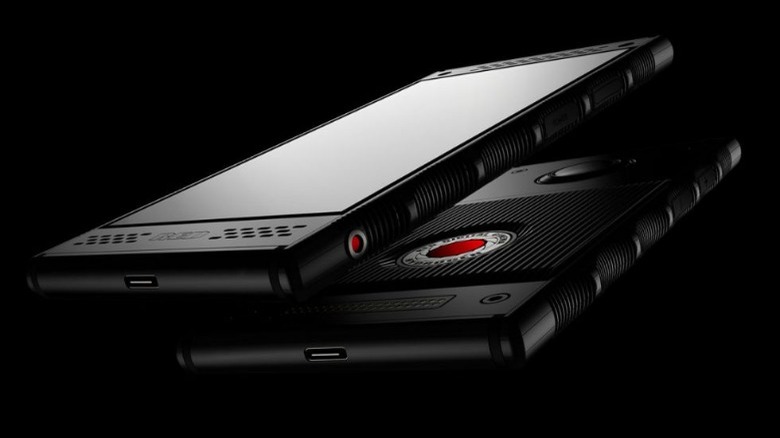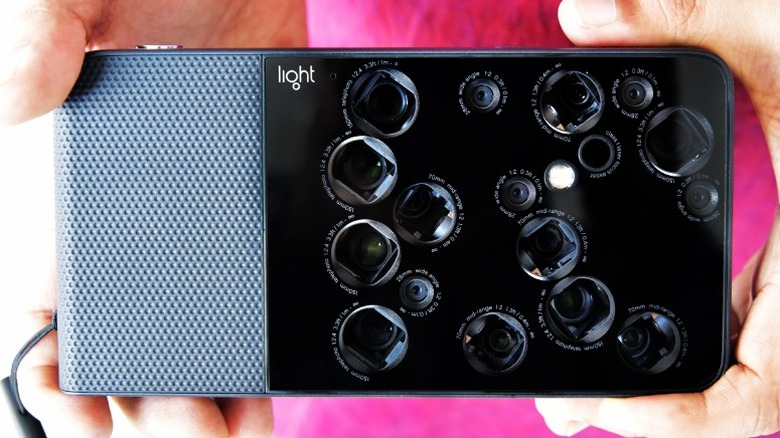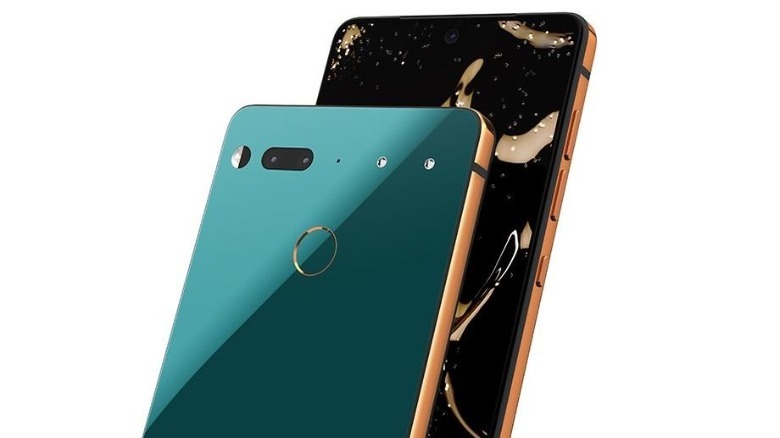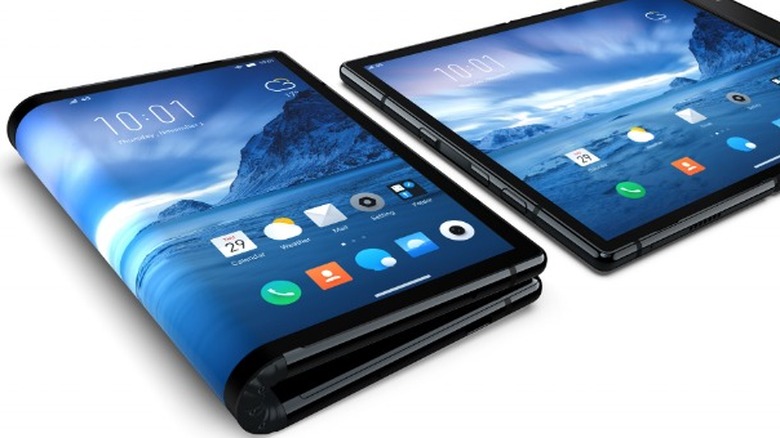The 12 Biggest Failures In Android History
Creating the next big thing and launching a successful product is never easy. Many companies have tried and failed to carve a niche for themselves, or simply continue to exist in the constantly evolving and unforgiving world of the tech industry. Many spectacular failures have one operating system in common: Android. That's because, unlike Apple's careful and curated IOS, Android is a much more open OS (Operating System), which invites manufacturers to pursue risky and innovative concepts.
While a greater risk may yield a greater reward, such as with 4K video recording which was introduced with the Acer Liquid 2 and the fingerprint sensor which hit the mainstream after one was incorporated into the Motorola Atrix, it also has produced more spectacular failures, from modular phones to Google glass. These failures are perhaps even more fascinating than successful tech, and it's worth taking a look back and investigating the junkyard of Android history.
1. Amazon Fire Phone
The Fire Phone was Amazon's attempt to muscle its way into the smartphone market — but fell flat on its gimmicky face. The Fire Phone was designed to serve much the same purpose as Amazon's successful line of Kindle E-reader devices. Amazon's goal with hardware is to get customers into a software ecosystem that encourages them to buy other things from Amazon. That's why Kindles are relatively inexpensive: consumers buy a Kindle for cheap, and then continually spend more money to purchase E-books.
The Fire Phone, however, cost $650, which at the time was as much as an iPhone 6, and the main thing going for it was a glasses-free 3D display called "dynamic perspective." This tech was effective and fun, but also it wasn't really the must-have feature that Jeff Bezos himself was sure it would be. Bezos was heavily involved with the project, and some claim his micromanagement interfered with development and was largely responsible for its failure. Between its lackluster value compared to the competition and a variety of technical issues that plagued it post-launch, the unique 3D screen just wasn't enough to save the Fire Phone.
2. Earl Survival Tablet
The Earl Survival Tablet was supposed to be the must-have gadget for every person who enjoys spending time exploring the great outdoors. Its E-ink display would have been easy to read in bright sunlight and would have used very little power. This means that it would have been ideal for reading digital topographic maps in the backcountry. To further extend battery life, it would have had a built-in solar panel for charging on extended backpacking trips.
In addition to the natural inclusion of GPS navigation, the Earl would have also included a radio for 2-way communication without the need for a cell phone signal. It would have been rugged and waterproof so that it could survive being dropped on a rock or dumped in a lake. The touchscreen was going to use an infrared touch interface so that the tablet could be easily used while wearing gloves.
The project made a huge splash when it launched, and a lot of people put down their hard-earned money for pre-orders (including yours truly). However, Sqigle inc. was really just one guy with a dream and a dog named earl, and despite a valiant effort (chronicled sporadically on the now deleted website and community forum), bringing the Earl Survival Tablet to market proved too ambitious a project, and it slowly faded into history.
3. Google Project Ara
In 2022, according to the International Electrical and Electronic Equipment Forum, humans threw 5.3 billion phones away. That's an almost unimaginable amount of rare material just chucked in the bin and hauled to landfills or forgotten in sock drawers. E-waste is a very real problem, and Google Project Ara could have helped solve it had it ever made it into the hands of consumers.
Ara was to be a modular phone, meaning that users would be able to easily upgrade their devices with new cameras, processors, and other components without having to replace the entire phone. This would massively reduce E-waste from smartphones if modularity were widely adopted, and reduce the cost to the average consumer of keeping up with the march of technological advancement.
However, despite showing off promising concepts such as the Spiral 2, the tech really just wasn't there to make Project Ara a consumer-ready product. Fundamental issues such as durability and a lack of public demand for modular phones have kept these potentially promising devices an elusive and not-quite-realized dream.
4. Ouya game console
If you wanted to buy a video game console in 2012, but couldn't afford a console from Microsoft, Sony, or Nintendo, not to mention games to play on them, then you may have been excited about the Ouya. This miniature Android-powered gaming box would only set you back $100, and the Ouya promised that every game on the console would feature a free-to-try demo. It was well-marketed and raised almost $8,600,000 dollars during the course of its Kickstarter crowdfunding campaign.
It was only once the console shipped to reviewers and later to backers that problems started surfacing. The wireless controller was poorly made, the on-screen interface and software suffered from numerous issues, and the hardware of the design of Ouya itself was deeply flawed, resulting in the need for later hardware revisions.
More damaging still was how Ouya had failed to secure more than a few high-quality exclusive games. The free-to-try element that Ouya insisted be included in every game alienated game developers, and the console's store was flooded with low-quality games. A cavalcade of blunders destroyed consumer confidence in Ouya, and nothing they did could salvage the situation.
5. Energizer P18K
Have you ever wished that your phone's battery was measured in days, weeks, or even months? What would you be willing to trade for such monstrous capacity? If you answered "the ability to fit in the average pants pocket", then you're in luck! Sadly for the Energizer P18K, not everyone was so enthused about this 18,000 mAh battery. It could last for as long as 50 days without needing to be recharged, and Energizer pitched the P18K as being able to actually function as a power source for charging other devices.
Another interesting aspect of the P18K was that it featured a pop-up selfie camera with a dual camera system, as well as 3 more cameras in its main array. Add to this a spec sheet that was reasonably respectable for the time and price point, and this phone certainly wasn't without its potential merits.
However, the sheer size and weight proved too severe a compromise for the vast majority of potential customers. The P18K only managed to raise $15,005 of its $1,200,000 goal on Indiegogo, which is a particularly spectacular failure considering that Energizer is a major, recognizable brand. Perhaps if they had pitched a phone with a smaller, but still impressive battery the P18K might not have flopped so hard.
6. Polaroid iM1836
While Polaroid is mainly known for its instant film cameras, it's also occasionally dabbled in producing digital cameras as well. The Polaroid iM1836 was their attempt to produce a mirrorless interchangeable lens camera, but it never quite made it into the hands of photographers. The main problem was that the iM1836 resembled the Nikon 1 system just a little too much, and after a resounding loss in court, Polaroid was forced to cancel the camera entirely.
According to media coverage of the Polaroid iM1836 from the time, it's probably just as well it never saw the light of day. In its hands-on coverage of the camera, The Verge scathingly warned potential customers away from purchasing the camera.
It was an interesting camera in some respects, particularly in that it featured a system where each lens would feature a built-in camera sensor, though there would also be a sensor in the camera body so that the iM1836 could work with a wider range of lenses rather than the proprietary lenses that Polaroid intended to produce. However, the pre-production model was so rough that it seemed doubtful that it would ever morph into a market-ready product, and if it did the camera would have a hard time competing with similar offerings from bigger brands.
The Nikon 1 system, which the iM1836 too closely resembled, never really took off, and if Nikon couldn't make it work there was little hope for Polaroid. If anything, Nikon may have saved Polaroid money in the long run!
7. HTC Facebook Phones
Gimmicks like comically large batteries or holographic screens are at least interesting and fun to discuss. Gimmicks like extra buttons that do nothing other than make access to an app slightly quicker are both a bad idea and boring to boot. Samsung infamously learned this with the introduction of the Bixby Button, but they were forgiven for foisting their unhelpful virtual assistant upon the masses because everything else about the phone was awesome. The HTC Facebook phones didn't fare so well.
The HTC ChaCha and Salsa launched to decidedly mixed reviews, with mediocre hardware, questionable Facebook integration, and in the case of the ChaCha, a button specifically for slightly increasing the speed of posting things to your Facebook wall. This largely unwanted hardware feature combined with the rather terrible Facebook Home skin over the Android operating system wasn't popular despite all of the advertising money Facebook expended to push these phones.
The HTC Facebook Phones launched in 2013, but despite all the millions in advertising and AT&T slashing the price, only 15,000 units were sold that year. This led to the ChaCha and Salsa being quickly discontinued.
8. Google Glass
There was a period of time in the early 2010s when it seemed very possible that we might ditch smartphones for computerized glasses. That's certainly the future that was pitched with Google Glass, and the concept hit the mainstream media like a freight train. Celebrities tried them out, the device made Time Magazine's "Best Inventions of the Year" list, and Glass was heavily featured in magazines and TV shows.
Google Glass was an Android-powered wearable smart device that provided the user with a heads-up display that could perform many of the same functions as smartphones. It could make calls, use GPS for navigation, and take photos, among a variety of other functions, all without the need to glance down and swipe at a touchscreen.
That all sounds great on paper, but its rocky launch combined with snowballing media attention exposed the flaws of what was essentially a prototype device to an enormous audience. It was extremely buggy when it launched, and had terrible battery life, which led to reviewers scoring it somewhat poorly. Additionally, the integrated camera caused something of a panic as people voiced privacy concerns about the potential for surreptitious recording. This generated a knee-jerk reaction where many establishments outright banned Glass.
The result was that Google Glass was a failure in the larger consumer market, but it wasn't a total loss, as it still exists as a tool used by professionals such as doctors, who value it as a hands-free display.
9. RED Hydrogen One
When one of the kings of the cinema camera industry decided to launch its own high-end Android smartphone, expectations naturally ran high. The RED Hydrogen One's promise of cutting-edge hardware, a unique design, a holographic 3D screen, and interchangeable modules generated a significant degree of hype. What's more, photographers were anticipating the promised camera module that would allow the phone to be attached to professional camera lenses.
It was not to be, however, and the launch of the Hydrogen One was truly disastrous. From a disappointing holographic display with little available 3D content to outdated hardware thanks to nearly a year of delays, the phone was not up to the standards of what you'd expect from a device that started at $1300.
To make matters worse, the promised additional modules were never produced, compounding the other issues the Hydrogen One faced — so that practically everyone who bought one ended up disappointed. RED pledged that the Hydrogen Two would make up for the sins of its first phone and that early adopters would be rewarded with special treatment, but that turned out to be an empty promise when the Hydrogen Two was canceled along with the entire Hydrogen project.
In hindsight, it seems clear that for a first foray into the smartphone market, RED fell into a similar trap as Amazon with the Fire Phone. Instead, they would have been wise to have focused on essential features, a timely release, and the modular camera system that could have made the Hydrogen One stand out from the crowd in a good way.
10. L16 Camera
You'd be forgiven for mistaking the L16 camera for a greatly oversized smartphone adorned with an almost frighteningly random and profuse array of cameras on its back panel. The L16 was intended to revolutionize photography with a novel and intriguing idea. Rather than capturing one photo at a time and composing your shot in the moment, you would capture 16 images simultaneously using lenses of many varying focal lengths, then have them stitched together into one gigantic image that could be manipulated extensively after the fact.
The supposed revolution in photography did not come cheap, however, and at $2000 the L16 would need to prove it could replace high-end DSLRs and mirrorless cameras with their big sensors and bigger single lenses. As it turns out, that's a rather hard feat to accomplish with a camera that launches as a buggy mess.
The potential of the camera could be seen buried under an unpolished veneer, as it performed remarkably well in good, bright light. However, low light performance was abysmal, the software was unpolished, many lenses turned out not to be an adequate replacement for traditional professional glass, and the writing was on the wall. Light, the company behind the L16, now works in the automotive sector and is doing its best to forget its dreams of a photographic revolution.
11. Essential Phone
When Andy Rubin, one of the co-founders of Android, designed and launched the Essential Phone, many in the tech industry saw what its creator hoped: the potential for a new competitor to take on the entrenched titans of mobile computing hardware. The Essential phone launched to generally positive reviews, but despite being ahead of its time in many ways with a bezel-free display, among other innovations, it failed to garner the customer base it needed to achieve success.
Essential attempted a comeback later on with the far more outlandish Project GEM. This was long and thin, similar in dimensions to a TV remote. It's a beautiful and intriguing product that may well have found fans with its slim, potentially very comfortable form factor. However, the company was forced to shut down before Project GEM could see the light of day. Tragically, Essential turned out not to be as essential as it had pitched itself to be.
12. Royole Flexpai
Being first to market with a promising new technology isn't a guarantee of success, even if the prediction of the desirable nature of that tech turns out to be justified. The Royole Flexpai was the first commercially available foldable smartphone, but it was only available in China, and hands-on impressions of the phone were not particularly positive. While it was undeniably cool, the phone was bulky, not very useable, and the display quality was fairly poor.
It must have sold reasonably well, however, because China later got a sequel with the Flexpai 2, which was much better received by reviewers thanks to an improved (though still bulky) design so that the phone would fold into a more convenient rectangle, rather than the awkward wedge shape of the original Flexpai. The quality of the screen was also much improved, and it featured a competitive camera array that was at least competitive. A Flexpai 3 was rumored, with leaked images surfacing online, but it doesn't appear to have ever been officially announced. Royole seems to have evaporated with its most infamous vaporware Android smartphone.
